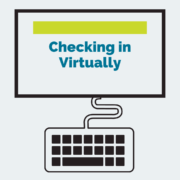Testing Accommodations

Testing accommodations should help students two-fold. Accommodations should provide support for students to access material and demonstrate mastery, and they should also foster a sense of confidence and boost students’ ability to advocate for themselves. When students feel successful, especially on an assessment, that confidence is magnified and motivates students that may have been discouraged by their learning differences. It is likely that students who struggle with a learning disability look unfavorably at their ability to test well. This does not have to be the case. With testing accommodations, students can reach their full potential and truly thrive.
Executive Functions Disorder:
Of course, accommodations should be tailored to each learner’s specific needs—that is why plans are called IEPs, or individualized education programs. These tools are tailored to each individual student, as there are certain accommodations that are known to assist certain styles of learners better than others. For students with executive function difficulties, testing accommodations can changes testing woes into wins.
Because students with executive functioning disorder struggle specifically with tasks involving higher-level thinking skills, testing accommodations remove unnecessary obstacles so that students can demonstrate an accurate picture of their knowledge. For example, some students may lack confidence when it comes to multiple choice questions. It is not that he/she lacks the knowledge or skills to arrive at the correct answer, it is simply that the ability to eliminate incorrect answers becomes a major distraction.
Provide students with three answer options as opposed to four—this makes the task of elimination less daunting.
Prompt students to physically cross or scratch out the answers that they know are incorrect; reminding them of this test-taking strategy can sometimes be all the help students need.
Allow students to mark or bubble their options right on the test booklet, as opposed to transferring them to a Scantron or bubble sheet. This eliminates the possibility that they will bubble the wrong answer or unintentionally skip questions.
Encourage students to highlight, underline, or mark certain parts of the question or answer options that stand out as crucial to the question. For example, if a question asks “What is not one of the author’s purposes for writing the text?” prompt students to recognize and mark the word not to reinforce the fact that they are looking for a non-answer.
Practice explicit, direct instruction of common testing terms such as analyze, organize, complete, develop, process, etc. These concepts are difficult for all students in the sense that they require abstract thinking. However, for students with executive functioning disorder, these types of cognitive skills are the precise functions that they struggle with specifically. If a test question asks them to “assess the use of the term” consider rewording the question or providing a footnote to explain what you mean by assess.
If students are asked to organize a paragraph in response to a prompt, provide them with a graphic organizer. This small modification helps students to get the ball rolling when constructing their response. They are still tasked with writing the response; however, the intimidation factor is eased by the fact that they have a scaffold form which to work.
Similarly, providing students with sentence frames in addition to a graphic organizer can help ease the stress of a written response. Since executive function disorder is often marked by the inability to or difficulty with organizing thoughts and conveying them in written form, sentence frames provide students with a starting point and allow them to show that they have mastered the concept without the cognitive output interfering.






